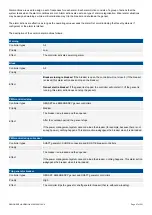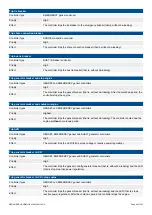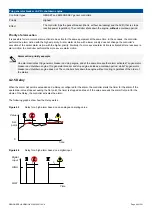
Table 4.4
Inhibit parameters
Range
Notes
The controller inhibits, plus
Inhibit #
, where # is 1
to 3
If you select
Inhibit #
, and the digital input
Activate inhibit #
is activated, then
the controller inhibits the alarm.
4.3.2 Suppress action inhibit
It can be useful to use a digital input function to suppress the alarm action for certain alarms. You can activate the function using a
digital input, PICUS, Modbus, and/or CustomLogic.
Input
Assign the function under
Configure > Input/output
. Select the hardware module, then select the input to configure.
Function
I/O
Type
Details
Alarm system > Additional functions >
Suppress alarm action
Digital input Continuous
When the digital input is activated, then the controller
suppresses all the alarms with
Suppress action
enabled.
4.4 Alarm handling
4.4.1 Overview of alarm handling
When an
Alarm condition
occurs the controller automatically creates an active alarm in the system (subject to inhibits). The active
alarm is handled by automatic and operator actions. The system only returns to a fully normal state (A) when the
Alarm condition
is
inactive, the alarm has been acknowledged, and if applicable, the alarm has been reset (unlatched). While the alarm condition is
Active
, the alarm state remains in state B or C.
The following diagram shows the typical alarm handling process. The three additional special states G
Shelve
, H
Inhibited
, and I
Out
of service
are not shown in this diagram.
DESIGNER'S HANDBOOK 4189340911K UK
Page 103 of 521
















































